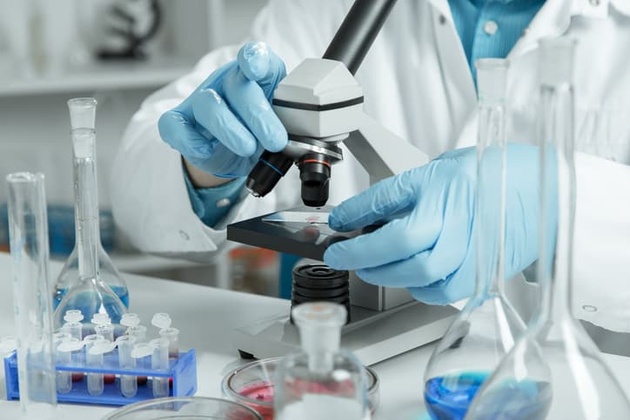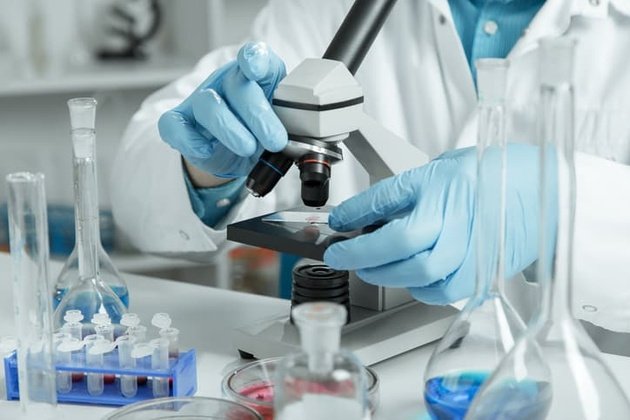What is Biopsy? Types and Applications
It is an important medical procedure used to diagnose abnormal tissues or cells in the body. It often plays a critical role in diagnosing cancer, inflammation, infection or other diseases. During a biopsy, a small tissue sample is taken from the body and examined in a laboratory environment. It provides vital information to determine the extent, type, and how advanced the disease is. Different biopsy methods vary depending on the targeted organ and the suspected condition. Biopsies can be performed from various organs such as lung, breast, thyroid, liver and kidney. Each of them is performed with a special technique. Therefore, biopsy is an indispensable medical practice in accurately diagnosing the disease and creating a treatment plan.

What is Biopsy?
It is a medical procedure that a doctor performs to obtain a sample of cells. This procedure helps diagnose health problems, including cancer, that may be causing abnormalities. In some cases, your doctor may decide that he needs to take a sample of your tissue or cells to help diagnose a disease or identify cancer. Removing tissue or cells for analysis is called a biopsy.
While it may sound scary, it’s important to remember that most are completely painless and low-risk procedures. Depending on your case, a piece of skin, tissue, organ, or suspicious tumor will be surgically removed and sent to the laboratory for testing.
How is a Biopsy Done?
Before having the procedure done,What is biopsy?It is natural for you to wonder about the details of the question. The transaction process gives you information about these details. The biopsy may require some preparations before the procedure, such as a clear liquid diet or nothing by mouth. Your doctor will give you information about what you need to do before the procedure. As always before a medical procedure, you need to tell your doctor what medications and supplements you are taking. You may need to stop taking certain medications, such as aspirin or nonsteroidal anti-inflammatory drugs, before the biopsy. There are different ways to perform a biopsy. The type of biopsy you have depends on the location of the tissue or fluid your doctor wants to examine.
What are the Biopsy Types?
There are many different types of biopsies. Nearly all involve using a sharp instrument to remove a small amount of tissue. If the biopsy is to be performed on the skin or another sensitive area, numbing medication is applied first. Biopsy types can be listed as follows:
- Needle biopsy: Most biopsies are needle biopsies. That is, a needle is used to access suspicious tissue.
- CT-guided biopsy: The patient lies in a CT scanner. The scanner’s images help doctors determine the exact position of the needle in the targeted tissue.
- Ultrasound guided biopsy: The ultrasound scanner helps the doctor guide the needle into the lesion.
- Bone biopsy: It is used to look for bone cancer. This can be done by a CT scan technique or by an orthopedic surgeon.
- Bone marrow biopsy: A large needle is used to collect bone marrow and enter the pelvic bone. With this procedure, blood diseases such as leukemia or lymphoma can be detected.
- Liver biopsy: Liver tissue is captured by injecting a needle into the liver through the skin on the abdomen.
- Kidney biopsy: Similar to a liver biopsy, a needle is injected into the kidney through the skin on the back.
- Aspiration biopsy: A needle draws material from a mass. This simple procedure is also called fine needle aspiration.
- Prostate biopsy: Multiple needle biopsies are taken from the prostate gland at the same time. A probe is inserted into the rectum to reach the prostate.
- Skin biopsy: It uses a circular blade to take a sample of skin tissue.
- Surgical biopsy: Open or laparoscopic surgery may be required to biopsy hard-to-reach tissue. A piece of tissue or the entire piece of tissue may be removed.
How is a Lung Biopsy Done?
A lung biopsy may be done on an outpatient basis or as part of your hospital stay. Procedures may vary depending on your condition and your doctor’s practices. Additionally, some biopsies may be performed using local anesthesia to numb the area, while others may be performed using heavy sedation or general anesthesia. Generally, the following steps are followed in a lung biopsy:
- An intravenous (IV) line may be placed in your arm or hand.
- You will be positioned so that the doctor can easily reach the part of the lung to be sampled. You may be sitting or lying down.
- An X-ray or CT scan may be used to find the desired biopsy area.
- The skin over the area to be biopsied is cleaned with an antiseptic solution.
- You will feel a pinprick when local anesthesia is injected. This may cause a brief stinging sensation.
- During the procedure, you will need to remain still, not cough, and hold your breath when told to do so.
- A small incision will be made over the biopsy site. The doctor will insert the biopsy needle into the lung between the ribs.
- You may feel discomfort or pressure when the doctor inserts the needle into the lung.
- The biopsy needle will be withdrawn. Firm pressure will be applied to the biopsy site for several minutes until the bleeding stops.
- If necessary, the doctor closes the opening in the skin with stitches or adhesive tape.
A sterile bandage or dressing is then applied. The lung sample taken is also sent to the laboratory for examination. You may have a chest X-ray taken immediately after the biopsy.
How is Breast Biopsy Done?
A breast biopsy is the process of removing a sample of breast tissue for testing. The tissue sample is sent to a laboratory, where doctors who specialize in analyzing blood and body tissue (pathologists) examine the tissue sample and make a diagnosis.
If you have a suspicious area of your breasts, such as a breast lump or other signs and symptoms of breast cancer, a breast biopsy may be recommended. It may also be used to look for unusual findings on a mammogram, ultrasound, or other breast exam. There are many types of breast biopsy procedures. Your doctor will recommend the type that’s best for you based on certain factors, including:
- The size of the suspicious area on your breast
- Location of the suspicious area on your chest
- How alarming the suspicious area looks
- Whether you can feel suspicious tissue during physical examination
- Your general health and personal preferences
Most breast biopsy procedures involve seven general steps, including:
- Using imaging guidance
- make the incision
- Breast tissue removal
- Placing biopsy markers
- Closing the incision
- Examination of tissue sample
How is Thyroid Biopsy Done?
Although it varies depending on the type of research, it is usually done by carefully inserting a thin needle into the thyroid nodule. The needles used are smaller or the same size as the needles used to draw blood. Most often, ultrasound is used to find the tip of the needle. Thyroid cells trapped inside the needle are analyzed under a microscope. After the biopsy, a small tape is applied to the area where the needle entered.
How is a Liver Biopsy Done?
As with other procedures, the procedure for liver biopsy may vary. The steps to follow in a liver biopsy vary by type. The doctor usually finds your liver using ultrasound images to begin your procedure. In some cases, ultrasound may be used to guide the needle into your liver during the biopsy. He applies a numbing medicine to the area where the needle will be inserted. He then makes a small incision and inserts the biopsy needle. The biopsy process only takes a few seconds. You will be asked to hold your breath as the needle rapidly moves in and out of your liver.
How is Kidney Biopsy Done?
A kidney biopsy is a test in which one or more small pieces of your kidney are removed and then examined with special microscopes. Microscopes make it possible to view samples in greater detail. A kidney biopsy sample can be obtained in two ways:
- Percutaneous (through the skin) biopsy: A needle is inserted through the skin over the kidney and guided to the correct location in the kidney, usually with the help of ultrasound.
- Open biopsy: The kidney sample is taken directly from the kidney during surgery. The kidney sample is then sent to a pathology laboratory to check for any signs of disease.
Regardless of the type of procedure, your doctor will guide you to go through the biopsy process in the most comfortable way. You usually do not feel pain during any type of biopsy.




Comments are closed.